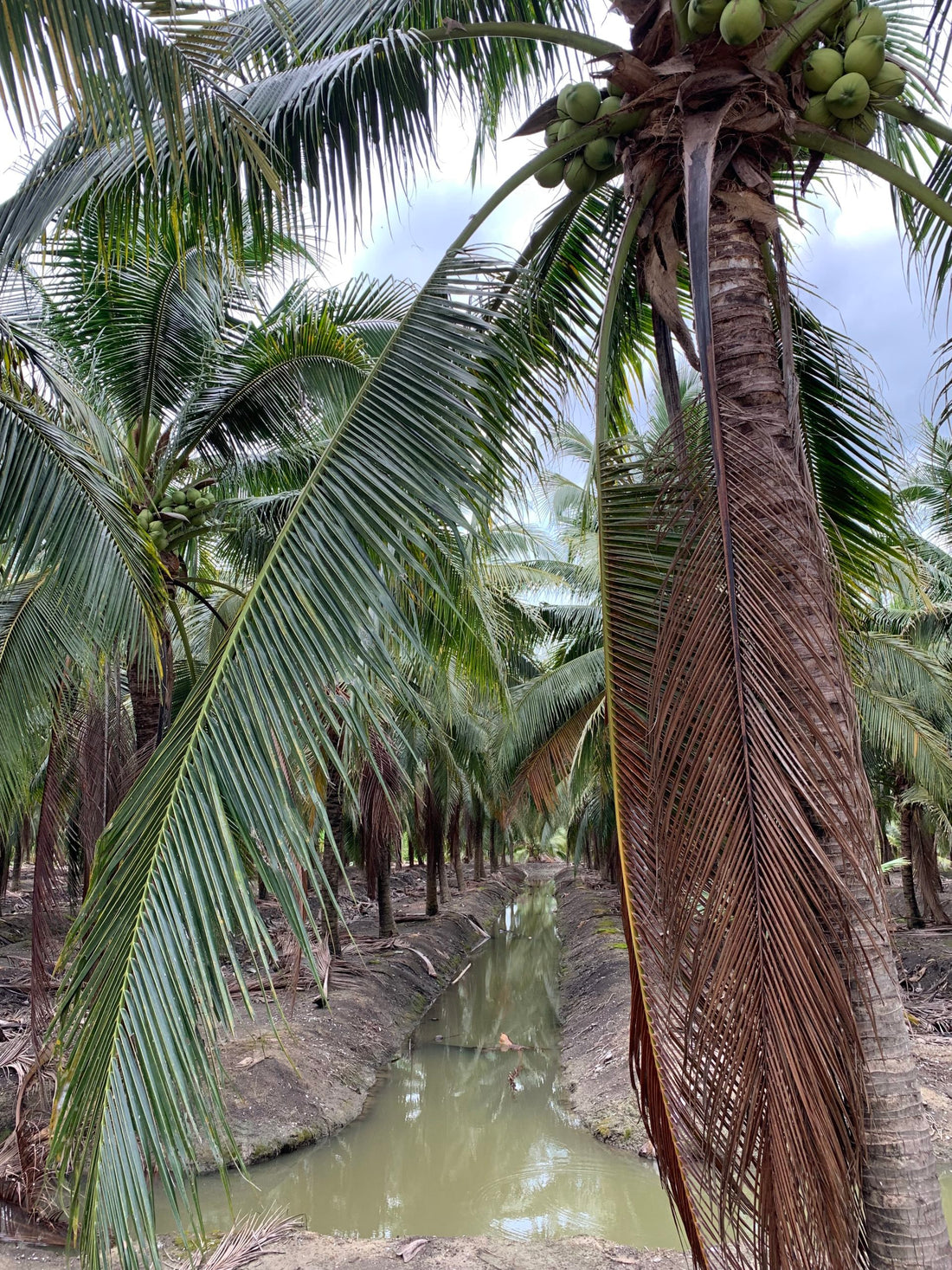Unlike other fruiting trees, young coconut trees are one of a kind with their capability to produce young coconuts year round. However, seasonality makes a big difference in terms of the coconut tree's yield or coconuts produced with time of harvest and flavor.
Dry and Rainy Season
In Thailand, there are only two seasons: dry and rainy. This one difference has a huge impact on coconut farming. The average rainfall can range from 14 inches in the rainiest month of September to less than one inch in March. When it is consistently monsoon-ing, the plentiful water nourishes the tree. Helping the coconuts to grow bigger and have more coconut water. With more coconut water, the layers of coconut meat are slightly thinner, and sweeter!
Conversely, in dry season, there are fewer coconuts that also have less coconut water. Thus they typically stay on the tree a few more days before being harvested. Consequently, dry season is considered low season for coconut farming. Keep in mind that due to growing time, the farming seasons track a month or two behind the actual seasons.
The Hotter The Temperature..
The hottest and driest months are from March to May. In Ratchaburi Province, where our factory is located, the average temperatures are always high. Ranging anywhere from 75 degrees F to 89 degrees F.
The hotter the temperature, and the more sun the coconuts are exposed to, the sweeter the coconut water! So coconuts on the same bunch can even have varying levels of sweetness. This also depending on whether they were shaded or sunbathing!
Seasonality paired with organic farming practices results in each batch of young Thai coconuts not only tasting their best. They are also uniquely their own in sweetness and water to meat ratio. We freshly freeze our young coconuts harvested and extracted at peak time to maintain the flavor and nutrition profile until it reaches your door.
Enjoy the subtle differences and imagine sunning yourself under a palm, in Ratchaburi as you stick a straw into a freshly cracked coconut. Better yet, visit during peak season and see the famous floating market!

